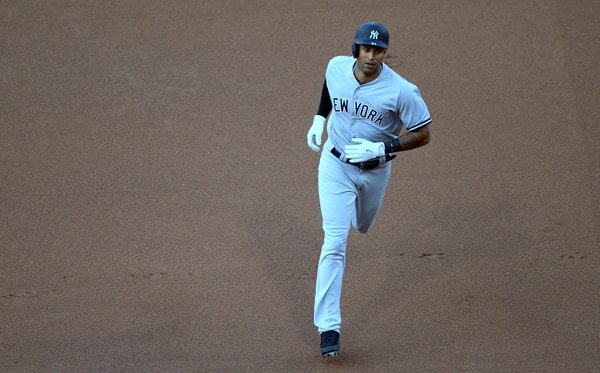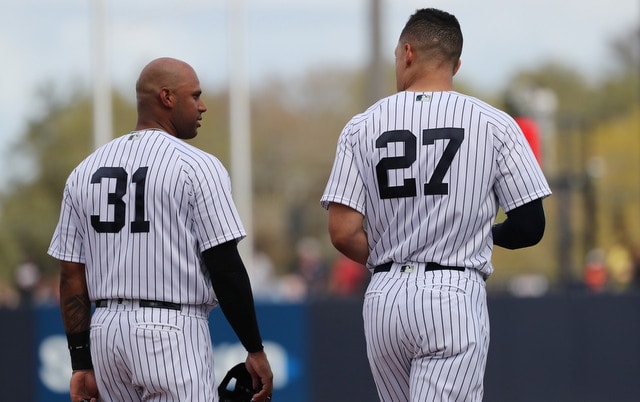
The Yankees manager, whether you like the person or not, becomes a part of your life if you follow the team consistently. You begin to understand the way they talk, the nicknames they have for the players and how they handle the team.
Despite all of his accomplishments in New York, Joe Girardi left an imprint on my daily life with one phrase that became synonymous with him: “It’s not what you want.” Life will let you down in ways you can’t control and it will leave you throwing your hands up in the air in despair in the fashion of Girardi, muttering the catchphrase. Ask anyone who knows me and they’ll tell you I say it too often.
INWYW works well with any aspect of random failure. You leave your house in the morning and forget your umbrella? It’s Not What You Want. Your computer gives you the blue screen of death? It’s Not What You Want. Your baseball team loses every single valuable contributor to injury? It’s definitely Not What You Want.
There are also different levels of INWYW. Some issues are minor and cause minimal annoyment while others will introduce severe exasperation.
I decided to rank some of the problems facing the 2019 Yankees on the It’s Not What You Want scale, which ranges from 1-5 Girardis.
Shaky April Bullpen: Two Girardis
Despite coming in with tremendous expectations, the Yankees’ bullpen has had a rocky beginning to 2019. They’ve accumulated innings while not necessarily looking great doing so. Zack Britton, Adam Ottavino and Aroldis Chapman have each struggled. Dellin Betances is out for a while. Meanwhile, Chad Green was optioned to the minors and looked lost beforehand.
It’s not what you want.
But! the Yankees are hardly the only team having bullpen issues. Among contenders, the Red Sox, Dodgers, Brewers, Mets and Nationals are all having some trouble. Furthermore, would you be shocked if the Yankees’ bullpen shapes up? I wouldn’t be. There’s a lot of guys with proven track records and even if Green doesn’t get it together, others will. There’s minimal exasperation.
Aaron Boone’s Managing: 1.5 Girardis
OK, if this is from Girardi’s perspective, this is a five, but Boone is his successor.
Anyway, the complaints about Boone are pretty constant and it’s hard not to quibble with some of his decisions, whether it’s off-days, bullpen management or some strategic inconsistencies. The playoffs put them on the national stage.
However, the role of a modern MLB manager is entirely overblown. The front office hands down a lot of the decisions and Boone isn’t to blame for the spate of injuries or underperformance of others. Feel free to question Boone, but he’s not the main source of the Yankees’ problems. I just can’t get myself too overhyped about managerial decisions.

The Injured List: Four Girardis
Oy vey. The Ringer detailed this pretty well, but the Yankees have had a truly historic smattering of injuries to their team. There are some short-term injuries with CC Sabathia and Gary Sanchez making quick returns and there are the long-term, significant ones to Aaron Judge, Luis Severino and Betances. The latter trio is arguably the Yankees’ best hitter, starting pitcher and reliever. The team has lost five (!) outfielders.
I’m genuinely unsure how a team can withstand the blows this team has taken, but they’re over .500 right now and thriving. Perhaps Severino being the only major blow to the rotation thus far has been its saving grace. Regardless, each subsequent IL announcement just gives an overwhelming feeling of despair, cursing the heavens with a INWYW.
The Defense: Two Girardis
The silver lining to the injuries has been everyday time for D.J. LeMahieu and Giovanny Urshela on the infield. Those guys are tremendous. The final groundout from Wednesday’s game would have been a throwing error or just a single with Miguel Andujar But losing Aarons Judge and Hicks, as well as Sanchez’s throwing arm for a time, haven’t help at all. Brett Gardner is still a strong outfielder but he’s best in a corner. We all miss Didi.

Missing out on Machado/Harper: Three Girardis
This is a special case of It’s Not What You Want: The level of exasperation is high, but the level of consequence is unknown. Would the Yankees have a better record with these guys? Maybe. Will not signing either player cost New York a World Series? Perhaps. It’s hard to know how much this has set back the Bombers and we’ll never truly nail it down. ¯\_(?)_/¯
River Avenue Blues Shutting Down: Five Girardis
This is my last post for the site. This place is the centerpiece to the Yankees Internet to me and there’s a major void without it. Losing this place is … not what you want. The last two-plus years writing here has been a blast. I hope to keep writing in some capacity and will be popping up on YESNetwork.com on occasion. Thanks to Mike, Ben, Joe and everyone who has made this site what it’s been.













